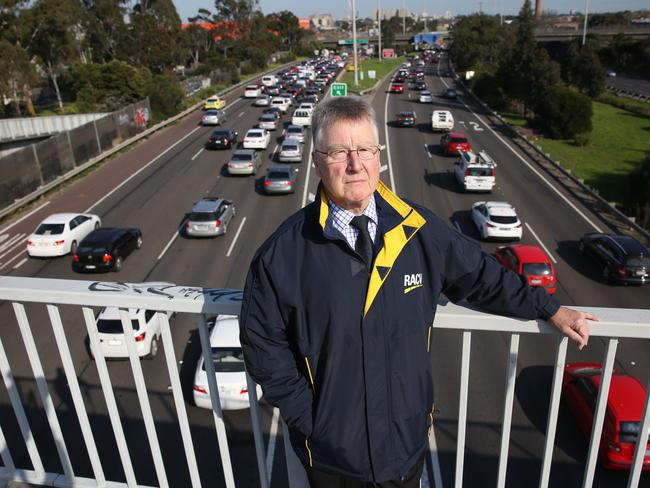Victorian roads more congested as 500,000 extra vehicles hit the roads in five years
WONDERING why you are always stuck in traffic? Shock new figures reveal 500,000 more vehicles have hit Victoria’s roads in the past five years. See which suburbs are fuelling the boom.
VIC News
Don't miss out on the headlines from VIC News. Followed categories will be added to My News.
- Melbourne traffic congestion on par with world’s biggest cities
- Motorists could spend extra hour commuting to work by 2030
- Victoria’s most annoying driving habits revealed
NO wonder our city feels like one giant traffic jam.
Shock new figures reveal 500,000 more vehicles have hit Victoria’s roads in the past five years. And three-and four-car families in outer suburbs are fuelling the boom.
Vehicle registrations have soared 11.5 per cent to 4.7 million since 2011, while the state’s population has risen 10 per cent, to about six million.
And the number of kilometres travelled on Melbourne freeways and arterial roads each year now tops 29 billion, up from 27.6 billion.

Census figures show the city’s outer southeast boasts most cars per household. Casey, which includes Cranbourne and Narre Warren, has almost 8000 dwellings with at least four vehicles, 14,000 three-car homes, and 40,000-plus two-car homes.
Other four-plus vehicle hotspots include Yarra Ranges (5601 homes), Hume (5025), Greater Geelong (4873) and Whittlesea (4580).
Pearcedale’s Luke Bennett lives in a house with five people and five vehicles.
“It’s quite painful. We’re always doing shuffles,” he said.
Mr Bennett said: “I’m always telling my stepsister not to park behind me, because I’ve got to get out at stupid hours in the morning.”

Melbourne inner suburbs, flush with tens of thousands of apartments and good public transport links, have the lowest car ownership levels.
The City of Melbourne had 28,140 dwellings recording no vehicles, and 21,703 households with just one car. Moreland, which includes Coburg and Brunswick, had 8415 homes with no vehicles. Port Phillip had 8182, Yarra 7649, Stonnington 7470 and Darebin 7167.
Across Victoria, 8 per cent of dwellings had no vehicles; a third had one vehicle; 37 per cent had two; and 18 per cent at least three, the Australian Bureau of Statistics’ latest census found.
RACV public policy manager Brian Negus said the high ownership rates in outer suburbs reflected population growth and a reliance on cars.
“We have a public transport system that’s very radially focused, except for the SmartBus system,” he said.
“We’ve still got a situation where something like 80 per cent of people use a vehicle to get to work. It’s extremely important we continue with a strong push to improve both roads and public transport.”

Mr Negus said people buying in growth areas faced a dilemma: house prices were cheaper than in more established areas, but transport costs were high owing to a lack of public transport.
“It’s especially important for bus services to get people to train stations … to try and avoid having to buy the second car or third car,” he said.
VicRoads says as of June 30, Victoria had 3.7 million light passenger vehicles, 724,000 goods-carrying vehicles, 160,975 heavy vehicles and 191,404 motorbikes. It has about 150,000km of roads for general traffic and 50,000km more of minor roads and tracks in parks and forests. VicRoads manages 23,000km of freeways and arterials.


